- Home
- Terry Brooks
Sometimes the Magic Works Page 8
Sometimes the Magic Works Read online
Page 8
My lead character is Maud Manx, a real road warrior. At eighty years of age, she has slowed down a bit. She has only one arm, loves cats, hates birds, and once worked as a bookseller for a small independent bookstore specializing in books on plants and animals. She was with the CIA for thirty years, but has been retired for the past fifteen in the little town of Octogenarian, Montana, where she lives up in the mountains in a small cabin with her aging toms, Kibbles and Bits.
Her enemy is a ruthless scientist named Feral Finch. Finch was a CIA operative, as well, but he turned rogue and eventually formed his own network of troublemakers who have plagued the CIA ever since. Maud and Finch were once partners, but now are bitter enemies. Finch, in an experiment gone horribly wrong, turned himself from a man into a large bird and is unable to regain his human form. Embittered and vengeful, he blames the government (well, who doesn’t?) for his problems. He also blames Maud. In an earlier confrontation, Finch, in his bird form, took off Maud’s arm at the shoulder.
They haven’t done battle in twenty years, but now Finch has come in search of Maud with the intent of doing her in. Alone and seemingly unprotected, her association with the CIA long since ended, her strength depleted with age, and her skills dissipated by the passing of time, Maud must face her enemy alone.
Supporting characters include a small group of people that our mountain-dwelling retiree has come to know in the natural course of things. We have Alfred Stamp, the postman, who is known for his uncertain temper and erratic behavior; little Johnny Gazette, the paperboy, who sometimes brings Maud canned beets from his mother; and Martha Handy, the strange old lady who lives deep in the woods behind Maud and makes all her own clothes out of tree bark. I am also thinking about a local law enforcement presence, but haven’t decided about that yet.
The title of my imaginary tome is Cat Chaser.
Pretty good so far, right? A catchy title, the promise of lots of excitement, a hero and villain who might prove interesting, and some potentially quirky supporting characters. Sure, it’s silly and the only ones who could do it justice would be Dave Barry or Carl Hiaasen, but it will serve our purposes well enough.
So with our Maud Manx thriller as a working model, let’s look at a few of those rules I mentioned earlier.
The first is a familiar one: WRITE WHAT YOU KNOW.
What the heck does that mean, anyway? Does it mean I can’t write about anything that hasn’t happened to me? If it doesn’t involve the Midwest or lawyers or writers or bookselling, am I out of my depth? I’ve had lots of cats and dogs, so I’m on solid ground there, but I’ve never had much use for birds. I don’t know anyone who has lost an arm. I’ve never worked for the CIA, though some of my editor’s most successful authors are former spooks. So how am I supposed to follow this rule, given my limited life experience?
The answer, of course, is that this rule is not to be interpreted literally. I have heard E. L. Doctorow say that any writer of fiction should be able to write about any period in history after reading only a single sentence written from that time. He was telling his audience that writers are blessed with active imaginations for a reason. I need only enough familiarity with my subject matter to give the reader the feeling that I have some idea of what I am talking about. I don’t need to know all about the CIA to write this story. I’m not writing about the CIA. By the same token, I don’t need to have lost an arm to write about it. I just need to give my readers a sense of what that would be like, to make it feel real for them.
You can achieve most of what you need through a little bit of research, a smidgen of intuition, and a judicious use of imagination. What you want to avoid—what the rule is really all about—is trying to write a story in which the central elements rely on extensive life knowledge that you don’t have. So, for example, you don’t want to tackle a story in which the lead character is a doctor trying to cure cancer and where a consideration of various current advances in medicine is central to the plot if you don’t know anything about doctors or cancer or medicine and don’t want to research all three extensively. You want to write about aspects of the human condition that you are comfortable exploring or inhabiting over the course of your book.
If I want to make Maud and Feral former CIA operatives, I had better have a talk with my editor about what this is like and do some reading by some of those former spooks. It wouldn’t hurt for me to do a little reading about people with disabilities, either.
This brings us to rule number two: YOUR CHARACTERS MUST BEHAVE IN A BELIEVABLE FASHION.
This rule is an important addendum to the first. If you don’t know what you are writing about to begin with, it becomes difficult for you to know how to describe your characters. How do CIA operatives behave? How do they think? What makes them different from, say, policemen? Or are they? Even if you don’t have life experience in this field, you have to find out, if you are going to make your protagonist believable.
It is important to understand that this doesn’t mean that Maud can’t do some things that are entirely out of character with what you discover to be true about CIA operatives or about her personally. But it does mean that what she does at any given point has to feel right in the context of the storytelling. She might well do something totally out of character, like offer help to a bird she finds lying injured by the side of the road, even though she hates birds. But I have to give the reader a reason to believe that she might behave in this way under the circumstances.
The meshing of your characters and your plot should feel seamless to the reader. It isn’t inappropriate to let the reader wonder about how a character behaves at any given point, if somewhere down the road an explanation is offered or implied that brings everything back into line. What doesn’t work is when a character acts in an offhanded, arbitrary way and no reason is ever given for this. Or worse, if a character behaves in a fashion that suggests the writer is attempting to solve a troublesome plot device with an easy out: the dreaded deus ex machina. Irrational or inconsistent behavior merely detracts from the effort at creating a wholly realized, believable character.
So in our development of Maud and Finch, we need to see them interact and react in ways that make sense to us in terms of what we know to be true about the larger world and the human condition.
The third rule is an easy one: A PROTAGONIST MUST BE CHALLENGED BY A CONFLICT THAT REQUIRES RESOLUTION.
That’s easy enough here, where Maud is facing a life-threatening confrontation with an old enemy. The entire book centers on their efforts to outsmart each other, and we know going in that one of them, or maybe even both, will fail. Conflict is necessary in every book because that’s what generates concern for and interest in our characters. But we especially need it in this story because without it, we don’t have much of a thriller.
Fair enough. We’ve got our conflict. But in order to lend some depth to this story, maybe we want to expand Maud’s problems beyond her impending confrontation with her nemesis. Maybe Maud has lost the steely determination that once served her so well as a CIA operative. Maybe her life is different enough that, like the sheriff in High Noon, she doesn’t want to have to face another showdown. So now we have an opportunity to watch her wrestle with her fears and doubts, even as she awaits the inevitable appearance of Feral Finch. Maybe she is afraid for her cats or one of her friends or neighbors and must carry the burden of their safety on her aging shoulders, as well. Maybe she has just discovered she is going blind, and her sight comes and goes at inappropriate moments, leaving her particularly vulnerable to an attack. The more complex and overwhelming the threat to a protagonist, the better the opportunity for the author to create a compelling conflict and a dramatic resolution.
Of course, you can overdo this. Too many threats make the story unbelievable. Too much conflict renders it unrealistic. As with all things, you have to find a balance that works.
The fourth rule ties right into the first three: MOVEMENT EQUALS GROWTH; GROWTH EQUALS CHANGE; WITHOUT CHANGE, NOTHIN
G HAPPENS.
Uh-oh. I can read the confusion on your faces from here. The last part of this equation is self-explanatory. I think we all agree that changes in the lives of characters are necessary for the reader to feel that the journey traveled from beginning to end in a book has been worthwhile. But what about the rest of it? What the heck does all that mean?
Let’s start with the word movement and see if the mystery won’t come clear. When I use the word here, I am speaking of the sort of movement that takes place in the lives of characters during the course of a book. That movement can take many different forms. In some books, the movement is of a purely physical nature. The characters are on a quest that requires them to travel a great distance, or they are situated in a strange place that requires them to move around to understand what is happening. In other books, no one goes much of anywhere, and the movement is all emotional or even psychological. The characters are discovering truths about themselves or others that they hadn’t recognized before. They are coming to terms with their lives through events and circumstances or through their interaction with other characters. Maybe they never even leave their houses, but they are moving about inside their own heads, nevertheless.
What matters is that in each case, whether the movement is physical or emotional or psychological, the result is that some form of growth takes place with the characters involved. Again, it might be physical—a coming of age that results in a transition from child to adult, a literal growing up. It might also be a coming of age that takes place emotionally or psychologically, one that involves maturity of thought, and takes place inside the person involved. Or it might be a kind of recognition of truths that becomes life-transforming.
But without that movement to trigger that growth and that growth to cause that change, we don’t have a very compelling story. The reader wants to see something happen between pages one and four hundred, and as the rule points out, nothing happens if the characters don’t change. I would suggest that this is the single biggest problem with series in all categories of fiction writing. From one book to the next, the characters don’t ever change, don’t ever grow, and don’t ever surprise. They turn static, and when that happens you can be pretty sure the writer has lost interest in what he or she is doing.
So in Cat Chaser, even if we don’t see this as more than a single book, Maud needs to evolve in some measurable way. She needs to do more than sit around fretting about the coming of Feral. Engaging in a successful confrontation that frees her from her worries isn’t enough. She has to do more. She has to come to terms with who and what she is, what it means to her to have to fight that last battle, and how she is likely to go on with things once it is over. The reader wants some enlightenment on these issues, some sense of the humanity of the character, and if the author doesn’t provide it, the story loses a great deal of its impact.
Part of the way in which we writers achieve all this is through the relationship we create between our protagonist and antagonist. Thus, our fifth rule: THE STRENGTH OF THE PROTAGONIST IS MEASURED BY THE THREAT OF THE ANTAGONIST.
The stronger the threat posed by the antagonist, the greater the demands placed on the protagonist, to put it another way. If we are to be compelled by what happens to our main character over the course of the story, we must see him or her challenged in an appropriately demonstrable way. We don’t want to read some four hundred pages only to discover the obstacles faced were never really much of anything after all. This doesn’t mean we have to see a protagonist placed in a life-and-death situation every time out in order not to be disappointed. It means that given the nature of the story, the conflict facing the protagonist must be real and challenging.
Don’t forget that the antagonist in a story isn’t always a person. It might be an animal or a monster. It might be an appliance or a vehicle; Stephen King has written more than a few of those. It might be the weather or a mountain or an inhospitable climate. It might be an impending cataclysmic event, like a nuclear explosive on the verge of detonation. It might be a disfiguring injury or a life-threatening disease. But in each instance, the size of the threat—its immediacy, perversity, potential consequences, and so on—will provide a way to measure the courage, resolve, and strength of character of our protagonist.
So Maud Manx must be made to rise to the nature of the threat posed by Feral Finch, by the fears and doubts his coming engenders, and by the limitations placed on her by age and disability. How successful I am at depicting all this will determine how engaged the reader becomes in the story, how compelled by the action, and how concerned for the story’s outcome. Ultimately, it will determine whether or not the book works as a thriller.
Whew! All those other chapters were so short, and this one is only half done! At least it’s the tougher half. It gets much easier from here. Nevertheless, let’s take a break in case you want to turn out the lights and get some sleep, and we’ll pick up on things in the next chapter. I’ll go put out the cat.
* * *
Readers will accept almost anything from
you if you don’t make them feel they
have wasted their time and money.
* * *
* * *
MAUD MANX,
PART TWO
* * *
WELL, HERE WE are again, back in our virtual classroom, ready for another look at those valuable rules of writing. I know I shouldn’t say this, but even though I believe strongly in their value, some of them may not work for you. This is true about all writing rules and all books on writing, and you have to be able to pull out what will help you and discard what doesn’t. Of course, I think my advice is pretty good, but oddly enough, other writers feel the same way about their advice. Such is life. You have to make up your own mind.
Anyway, back to Maud Manx, Feral Finch, and their adventures in the thriller Cat Chaser.
The single most violated rule of writing is the one I want to talk about next, and you ignore me in this instance at your peril.
Rule six goes like this: SHOW, DON’T TELL.
I’ll bet you’ve heard that one before. Almost everyone has. Certainly everyone who comes into one of my classes on writing fiction has. Three little words, and they seem to cause writers a world of trouble.
What those words are saying is that writers need to remember that the less we see of them during the course of their stories, the better. It is the characters and the plot of a book that are involving, not the writer. The writer needs to reveal the story through the words and actions of the characters, not through his or her narration of them. Everything that happens in a book should take place as if the writer wasn’t present. We should be able to read a story through from beginning to end without any awareness at all of an author presence.
The problem arises when the writer violates the Show, Don’t Tell rule. What happens is that the writer starts telling us about characters and events, rather in the way of the Chorus in the old Greek tragedies, instead of showing us through a depiction of the action. When this happens, the story stops dead in its tracks and starts to take on the look and feel of a lecture. Because the writer is now telling us what is happening instead of showing us, the reader becomes distanced and no longer feels a part of the story, is made more a viewer than a participant. The immediacy of the storytelling is stolen away. The spontaneity and life disappear.
To illustrate what I mean, let me give you two examples of the same scene. The first violates the Show, Don’t Tell rule; the second doesn’t. We’ll use a scene out of Cat Chaser to illustrate the difference.
EXAMPLE 1: Maud was eighty-one years of age with piercing dark eyes and a stiff, squared-away stance that suggested aching joints. Gray hair hung in a single braid down her back, tied at the end with a ribbon. Deep age lines marked her strong, plain face. She was missing her right arm, the sleeve of her cotton dress pinned up against the breast and neatly folded at the elbow. For many years, she had worked in a bookstore, and before that, as a CIA operative. She loved cats an
d had two old toms at present named Kibbles and Bits. But while cats were welcome in her home, birds were not. She hated birds because as a child she had always been afraid of their beady, quick eyes and sharp little beaks.
Okay, that’s pretty dreadful, I grant you. But I need to make the distinction between telling and showing as clear as possible, so I am going overboard just a bit.
EXAMPLE 2: Maud moved gingerly today, the result of another twenty-four hours added to her eighty-one years. Oddly enough, she felt the same as always, although her dark eyes might give her away to someone who looked closely enough. Ignoring her stiffness and the ache of her joints, she brushed lightly at her braided gray hair and smiled at the sunlight streaming through her cabin window. The smile gave her lined face a warm and reassuring cast, the sort that always suggested to those she encountered that she had a good heart. Kibbles, the better half of Bits, trotted up to her, and she picked up the old tom and held him in the cradle of her good left arm. She glanced down at the empty right sleeve of her dress, checking her appearance the way she had been taught to do during her years with the CIA. Government agents never forgot their training. Or maybe it was booksellers who never forgot, she couldn’t remember. She laughed silently at herself, able to push back the years and the past. On a day like this, she could even feel kindly toward birds, and that was rare indeed.
I probably could do better if I wanted to spend more time on it, but you get the general idea. The second paragraph is more fluid and more fully developed. We learn about Maud through her actions—the picking up of Kibbles, her smile, her laugh, her reaction to what she sees, even the way she moves around the room. We learn about her through her thoughts. In the first example, we learn about her through a writer’s bare-bones recitation of her attributes and limitations, and we are very much aware that the writer isn’t showing us anything, he’s telling us.

 The Talismans of Shannara
The Talismans of Shannara The Sword of Shannara: The Druids' Keep: The Druids' Keep
The Sword of Shannara: The Druids' Keep: The Druids' Keep Witch Wraith
Witch Wraith The Elf Queen of Shannara
The Elf Queen of Shannara The Weapons Master's Choice
The Weapons Master's Choice The Scions of Shannara
The Scions of Shannara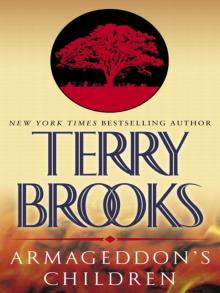 Armageddon's Children
Armageddon's Children The Sword of Shannara Trilogy the Sword of Shannara Trilogy
The Sword of Shannara Trilogy the Sword of Shannara Trilogy The Darkling Child
The Darkling Child The Black Unicorn
The Black Unicorn The High Druid's Blade
The High Druid's Blade Wards of Faerie
Wards of Faerie The Tangle Box
The Tangle Box The Black Elfstone
The Black Elfstone The Black Irix
The Black Irix The Elfstones of Shannara
The Elfstones of Shannara The Magic Kingdom of Landover Volume 2
The Magic Kingdom of Landover Volume 2 Bearers of the Black Staff
Bearers of the Black Staff Jarka Ruus
Jarka Ruus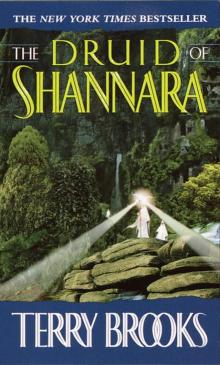 The Druid of Shannara
The Druid of Shannara The Sword of Shannara
The Sword of Shannara The High Druid of Shannara Trilogy
The High Druid of Shannara Trilogy Angel Fire East
Angel Fire East The Gypsy Morph
The Gypsy Morph The Wishsong of Shannara
The Wishsong of Shannara Magic Kingdom for Sale--Sold
Magic Kingdom for Sale--Sold Running With the Demon
Running With the Demon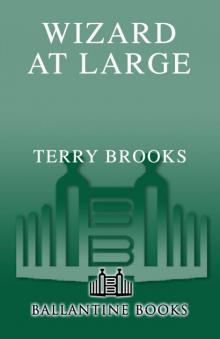 Wizard at Large
Wizard at Large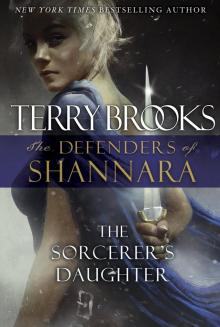 The Sorcerer's Daughter
The Sorcerer's Daughter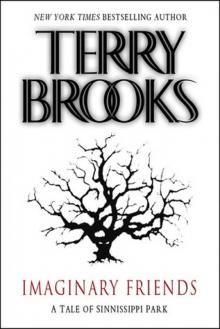 Imaginary Friends
Imaginary Friends The Elves of Cintra
The Elves of Cintra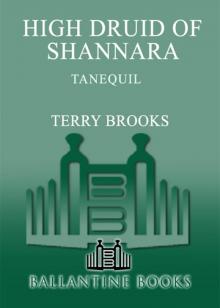 Tanequil
Tanequil Witches' Brew
Witches' Brew The Sword of the Shannara and the Elfstones of Shannara
The Sword of the Shannara and the Elfstones of Shannara The World of Shannara
The World of Shannara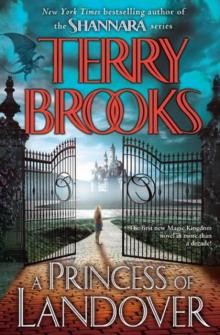 A Princess of Landover
A Princess of Landover A Knight of the Word
A Knight of the Word Straken
Straken The Skaar Invasion
The Skaar Invasion The Measure of the Magic: Legends of Shannara
The Measure of the Magic: Legends of Shannara Ilse Witch
Ilse Witch Bloodfire Quest
Bloodfire Quest The Stiehl Assassin
The Stiehl Assassin Antrax
Antrax The Last Druid
The Last Druid Paladins of Shannara: Allanon's Quest
Paladins of Shannara: Allanon's Quest Sometimes the Magic Works: Lessons From a Writing Life
Sometimes the Magic Works: Lessons From a Writing Life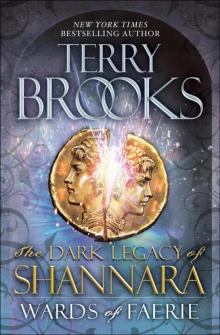 Wards of Faerie: The Dark Legacy of Shannara
Wards of Faerie: The Dark Legacy of Shannara Indomitable: The Epilogue to The Wishsong of Shannara
Indomitable: The Epilogue to The Wishsong of Shannara Heritage of Shannara 01 - The Druid of Shannara
Heritage of Shannara 01 - The Druid of Shannara Star Wars - Phantom Menace
Star Wars - Phantom Menace The Dark Legacy of Shannara Trilogy 3-Book Bundle
The Dark Legacy of Shannara Trilogy 3-Book Bundle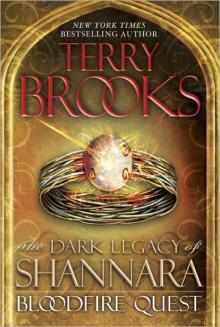 The Bloodfire Quest
The Bloodfire Quest The Hook (1991)
The Hook (1991) Star Wars: Episode I: The Phantom Menace
Star Wars: Episode I: The Phantom Menace Street Freaks
Street Freaks The Sword of Shannara & Elfstones of Shannara
The Sword of Shannara & Elfstones of Shannara The Magic Kingdom of Landover , Volume 1
The Magic Kingdom of Landover , Volume 1 The Phantom Menace
The Phantom Menace Unfettered
Unfettered Allanon's Quest
Allanon's Quest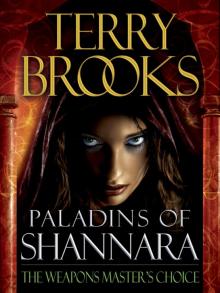 Paladins of Shannara: The Weapons Master's Choice
Paladins of Shannara: The Weapons Master's Choice Terry Brooks - Paladins of Shannara - Allanon's Quest (Short Story)
Terry Brooks - Paladins of Shannara - Allanon's Quest (Short Story) Star Wars Episode I: The Phantom Menace (star wars)
Star Wars Episode I: The Phantom Menace (star wars) Warrior (The Word and the Void)
Warrior (The Word and the Void) Word & Void 03 - Angel Fire East
Word & Void 03 - Angel Fire East![[Magic Kingdom of Landover 05] - Witches' Brew Read online](http://i1.bookreadfree.com/i2/04/05/magic_kingdom_of_landover_05_-_witches_brew_preview.jpg) [Magic Kingdom of Landover 05] - Witches' Brew
[Magic Kingdom of Landover 05] - Witches' Brew The Magic Kingdom of Landover - Volume 2
The Magic Kingdom of Landover - Volume 2 The Measure of the Magic
The Measure of the Magic The First King of Shannara
The First King of Shannara Sometimes the Magic Works
Sometimes the Magic Works The Sword of Shannara, Part 2: The Druids' Keep
The Sword of Shannara, Part 2: The Druids' Keep The Sword of Shannara tost-1
The Sword of Shannara tost-1 Paladins of Shannara: The Black Irix (Short Story)
Paladins of Shannara: The Black Irix (Short Story) Tangle Box
Tangle Box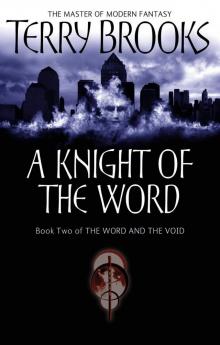 Word & Void 02 - A Knight of the Word
Word & Void 02 - A Knight of the Word The Sword of Shannara, Part 1: In the Shadow of the Warlock Lord
The Sword of Shannara, Part 1: In the Shadow of the Warlock Lord The Wishsong of Shannara tost-3
The Wishsong of Shannara tost-3 The Elfstones of Shannara tost-2
The Elfstones of Shannara tost-2